England is not home to the kind of dangerous animals we automatically think of, like tigers, anacondas, and crocodiles. To see those deadly beasts, you’d have to visit a zoo, but there’s a surprising amount of English animals that can hurt humans. Let’s discover the deadliest animals in England. Chances are, you’re in for a surprise!
1. Cows
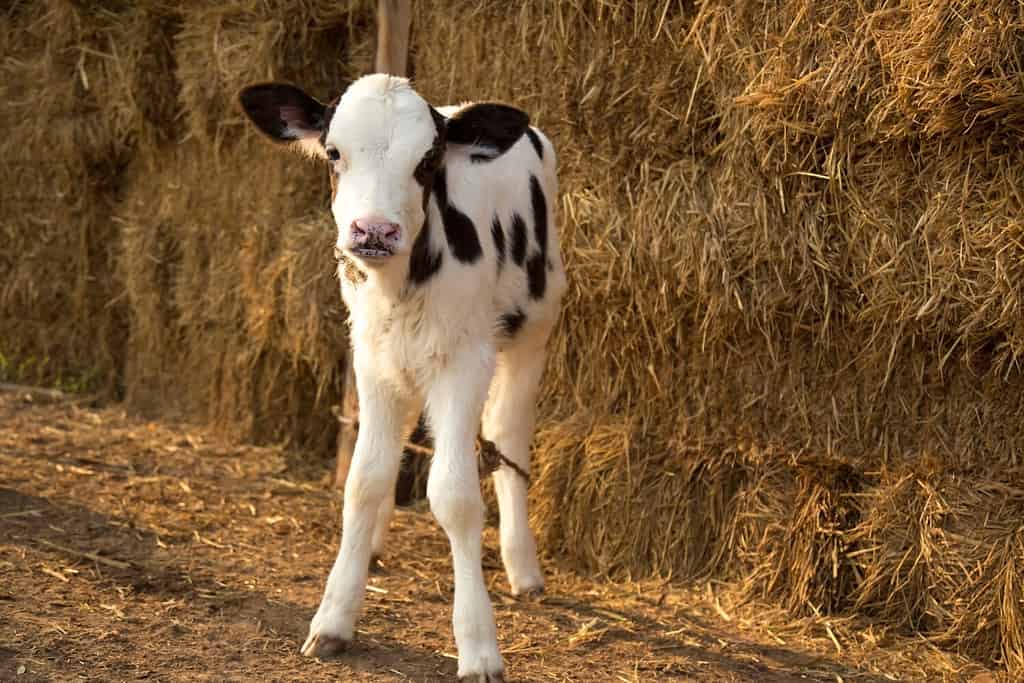
Cows are the most deadly animal in England.
©Napaphat Kaewsanchai/Shutterstock.com
For one one-on-one attack that leads to deaths in England, cows take the number one spot.
The thought of fanged cows chasing down people is horror movie magic. Still, in reality, cows charge and trample farm workers, auction staff, veterinary staff, and members of the public, especially people with a dog in tow.
The Health and Safety Executive states between 2017 and 2022, cattle killed 32 people in England. This makes them the most deadly animal in England.
9.6 million cows live in England, and they’re protective beasts. Bulls protect females, and females protect their calves. An average Holstein Friesian weighs 1,700 lbs, so when one charges, crushes, stomps, or tramples, it can cause fatalities.
2. Deer
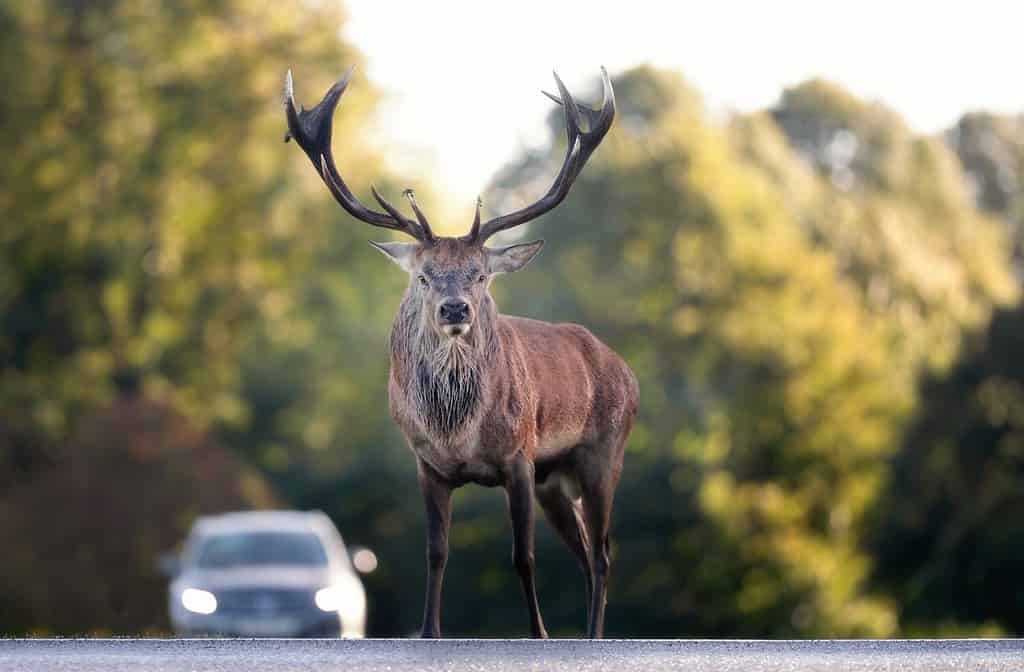
Deer cause hundreds of road collisions every day in England.
©Giedriius/Shutterstock.com
Although cows kill more people in England one-on-one, experts estimate across the United Kingdom, 200 deer collisions occur each day, leading to 20 annual deaths.
England is home to six deer species. The most commonly involved in road collisions are fallow deer, roe deer, and muntjac. The peak occurs in May when young males leave the herd and from October to January due to fewer daylight hours and increased deer movement for the rutting season.
2. Asian Hornets, Wasps, and Bees

An Asian hornet captures up to 50 honeybees a day to feed the nest’s larvae.
©t-mizo / CC BY 2.0 / flickr – License
Native to Asia, this hornet has established an unwanted presence in mainland Europe. In 2023, 22 confirmed sightings suggest they’ve made it across the English Channel to England.
Massive predatory Asian hornets pose a severe threat to England’s honeybee population because they prey on hives. A hornet snatches up to 50 precious honeybees out of mid-air each day to feed the nest’s larvae.
Queen hornets build nests in spring and lay enough eggs to hatch over 6,000 larvae. With honeybee numbers at an all-time low, the arrival of Asian hornets could spell disaster for England’s eco-system.
Not only that, an Asian hornet’s stinger reaches two inches long, and if disturbed, they become aggressive. Victims say their sting feels like a red-hot needle. For folks with allergies, a hornet, wasp, or bee sting could prove fatal.
3. Yellow Tailed Scorpion

European yellow-tailed scorpions arrived in England in the 18th century.
©iStock.com/Wirestock
England does not have native scorpions, but in the 18th century, Italian trading ships brought a nasty surprise to Kent in the form of yellow-tailed scorpions! Armed with a stinging tail and pincers, 10,000 of these carnivores now live in the crevices and wall cracks of Sheerness Docks in Kent.
Yellow-tailed scorpions reach two inches long, have dark brown bodies with yellow-tipped tails, and they prey on woodlice and spiders. Kent folks sometimes spot them basking in the sun, but although their sting is said to feel painful, there are no recorded deaths.
4. Weever Fish
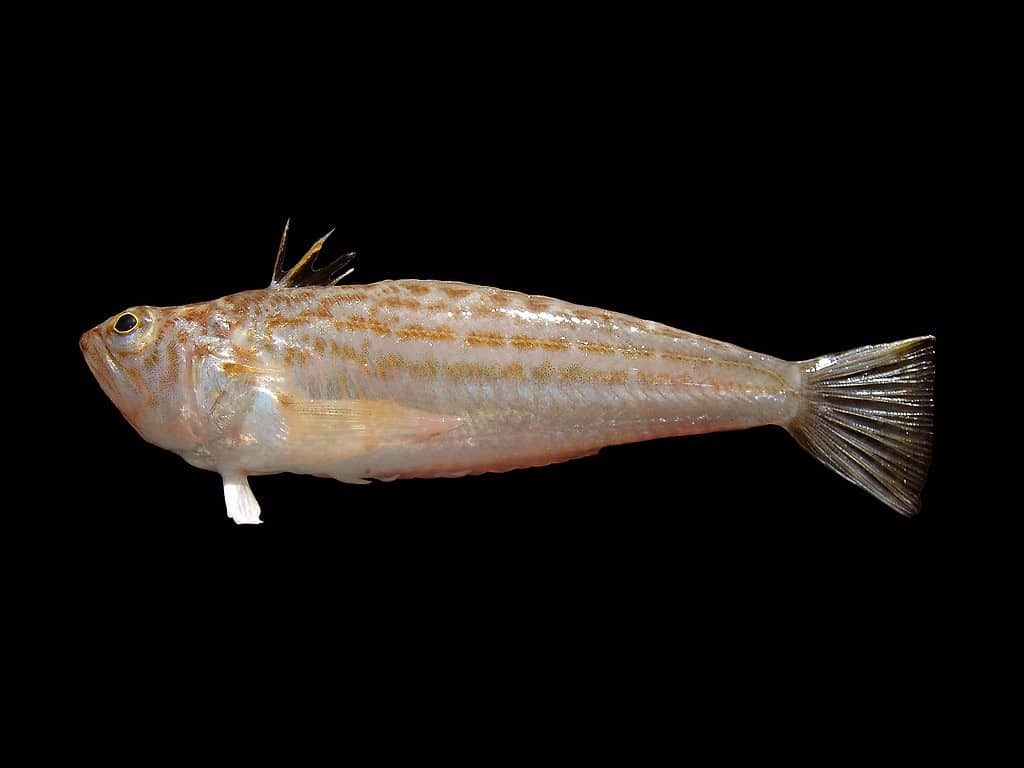
The danger with weever fish is that they have sharp venomous dorsal fins that stab into feet.
©Hans Hillewaert / CC BY-SA 4.0 – License
Weever fish live in warm coastal areas, hiding in shallow, muddy beach water, which makes them incredibly difficult to spot. These shy fish are coated in needle-sharp venomous spines that cause excruciating pain when stepped on.
Symptoms from a weever fish sting last for hours, and they can cause short-term paralysis. Death is extremely rare. Only one recorded death occurred in 1933, and that was due to multiple punctures.
Two species live in England, the lesser and greater weever fish, but both give a nasty sting. Always wear beach shoes on England’s coastline!
5. Common Stingray

Stingray fish are common around England’s coastline.
©BlackFarm/Shutterstock.com
Sticking with deadly fish, England hosts the common stingray, whose stinger can pierce human skin, injecting venom that causes vomiting, diarrhea, dizziness, and, in the worst case, even death.
Much-loved celebrity Steve Irwin was fatally pierced by a common stingray in 2006. Stingrays are calm and gentle most of the time, but they are certainly one of the most deadly animals in England when they’re afraid. However, stingrays don’t hunt people. They sting in self-defense to fend off predators like large fish and sharks.
Common stingrays can reach five feet across and weigh 80 lbs. In the UK, the largest stingray ever caught weighed 78 lbs 8 ozs.
6. Wild Boar

In England’s forests, wild boar eat fungi, nuts, and roots.
©Rudmer Zwerver/Shutterstock.com
Wild boar were hunted to extinction in the Middle Ages, but over the years, escaped farm and zoo boar have established wild populations in large English forests. Herds occupy Dorset, the Kent-East Sussex borders, and the Forest of Dean.
Shy wild boars don’t hunt humans, but they can be aggressive if threatened by humans or dogs. Female boar are highly defensive of the young, affectionally called humbugs due to their cute stripes. Adult wild boars have bristly dark hair, and males boast long protruding tusks.
Omnivorous wild boar plow forest floors in search of nuts, shoots, roots, fungi, and bark. They’ve no predators in England.
7. Portuguese Man O’War
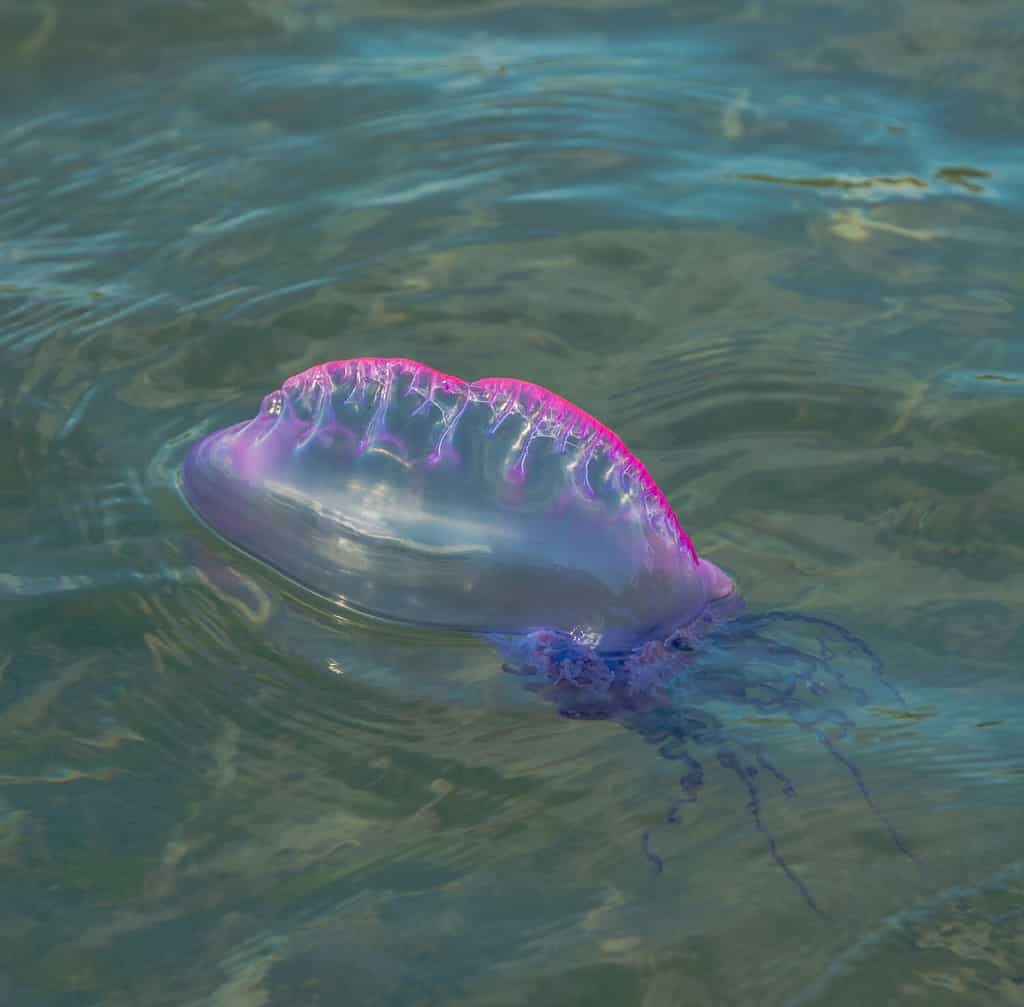
Global warming has heated England’s shorelines and attracted the Portuguese Man O’War.
©Broadbelt/Shutterstock.com
Most of us have heard about this impressive but scary marine creature. Due to global warming heating the coastline, they’ve started arriving in England.
A Portuguese Man O’War’s sting is epically painful. It causes rashes and fever, and rarely, death. What makes this creature so dreadful is its 30-foot-long tentacles — that’s about the length of a beach volleyball net. And that’s not all. These epic creatures swarm in groups!
Although they resemble a jellyfish, the Portuguese Man O’War is actually a siphonophore, a poorly understood group of floating ocean organisms. It is named for its resemblance to an ancient warship, which is apt because it’s a deadly animal in England for sure.
8. Sea Urchin
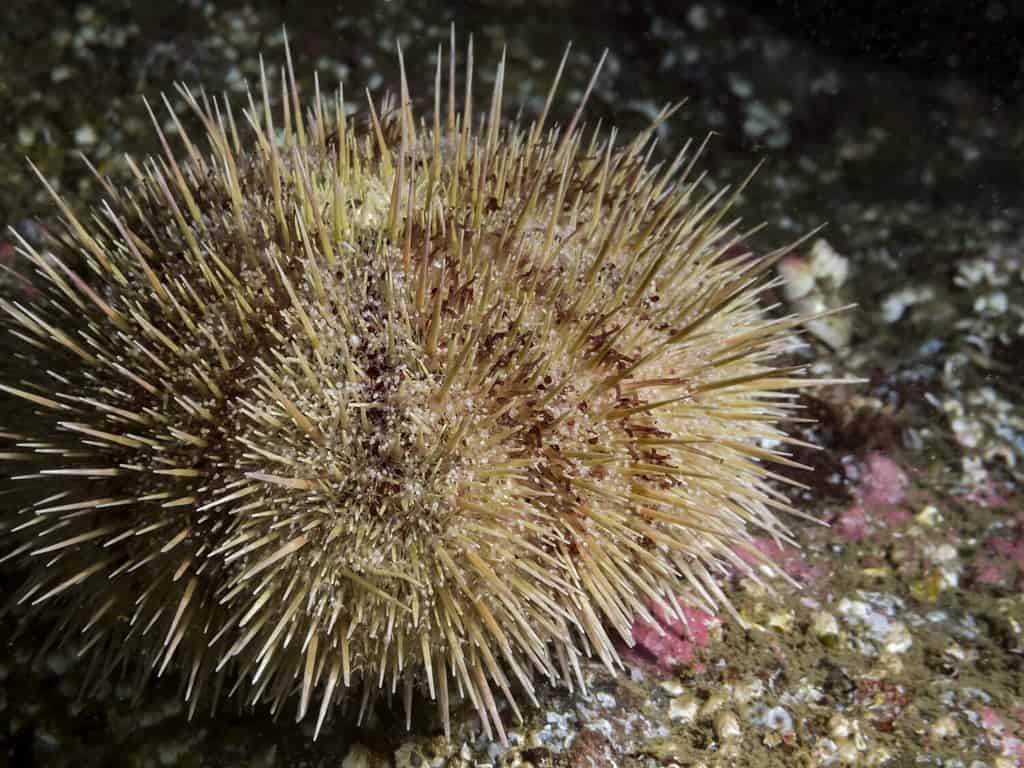
Sea urchins spines deliver a nasty wound, but they’re rarely fatal.
©NatureDiver/Shutterstock.com
Small and spiny sea urchins live in England’s coastal shallows, seagrass beds, and rockpools at low tide. They have long, piercing spines, but although a sting is very painful, death from sea urchins is very rare. The few that have occurred were due to allergic reactions. In rare cases, localized burning, bleeding, or vomiting might occur.
Pinky-purple, red, green, or yellow sea urchins feast on seaweed and barnacles or whatever floats its way. They’re related to starfish and sea cucumbers, and their remains often wash up on England’s shores.
9. Ticks
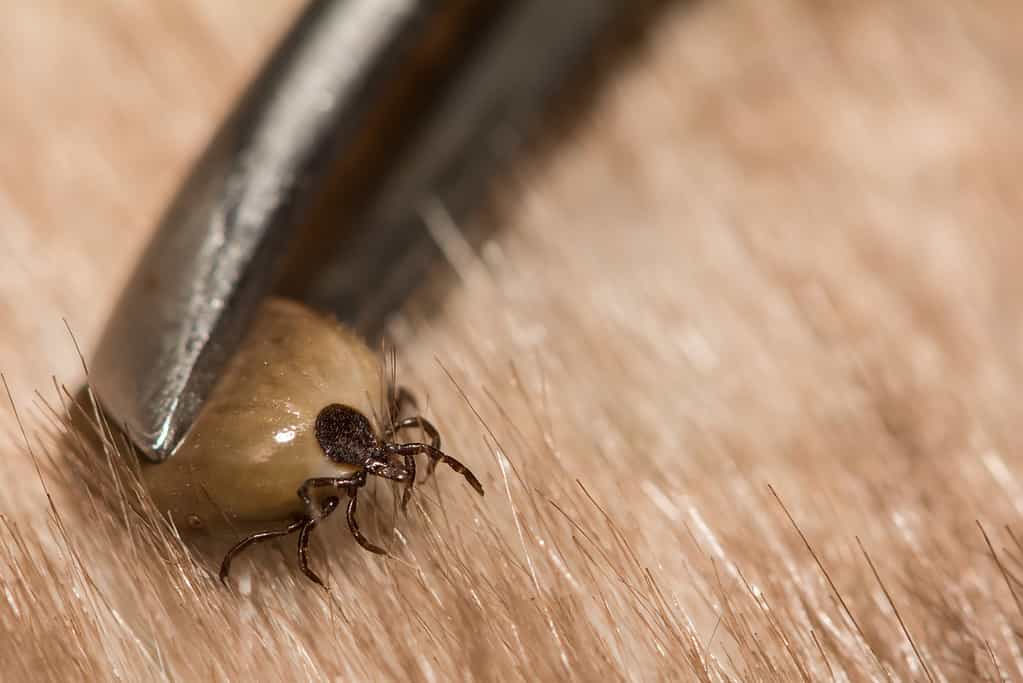
Ticks spread Lyme disease and tick-borne encephalitis.
©JasonOndreicka/iStock via Getty Images
Pinhead-sized ticks are one of England’s deadliest killers because they spread Lyme disease and tick-borne encephalitis (TBE). In England, 1,000 to 2,000 people are diagnosed with Lyme disease each year, and rarer tick-borne encephalitis is a recent occurrence. TBE is deadly because it can cause brain swelling.
Ticks are parasitic arachnids that live in long grass, woods, and many outdoor environments. They attach strong mouth parts to warm-blooded animals and engorged until full. Then they drop off to digest blood in peace before crawling on another victim. Ticks feed on birds, hedgehogs, rodents, sheep, cattle, horses, cats, dogs, and at a push – us.
10. Domestic Dogs

Pit bull terriers are banned in England.
©Anna Krivitskaya/Shutterstock.com
Between 2001 and 2021, 69 people died from dog attacks in England and Wales. It’s a small number, but it ranks as one of England’s most dangerous animals.
Domestic dog attacks are newsworthy events, and some of the more powerful dog breeds are banned in England as a result of fatal attacks. These include pit bull terriers, Japanese tosa, dogo Argentino, and the fila Brasileiro. At the end of 2023, XL bullies are set to join the list.
11. Adder
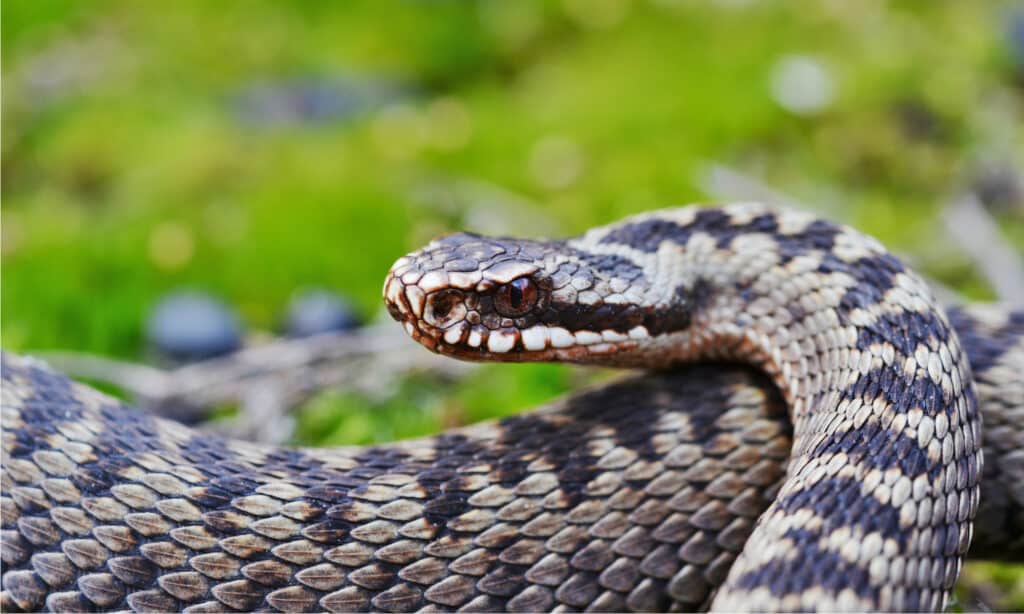
Common European adders bite 50-100 people every year in England.
©Holm94/Shutterstock.com
England’s only venomous snake is the shy adder. 50-100 adder bits occur in England annually, with hundreds of dogs struck, too. Thankfully, bites are mild, and there hasn’t been an adder-related death in the UK since 1979.
Adders only strike when they’re disturbed or harassed. An inquisitive dog’s nose snuffling through the grass counts as harassment by adders, as does treading on them by accident. Unbelievably, some bites happen when folks pick up an adder.
Adders live in undisturbed long grass of heathlands, moors, woods, and scrubland. Bites chiefly occur in spring when adders emerge to bask on footpaths and rocky areas. They prey on rodents, birds, frogs, and newts. Adders give birth to live young, many of which are taken by birds like pheasants and magpies.
12. Hairy Caterpillars
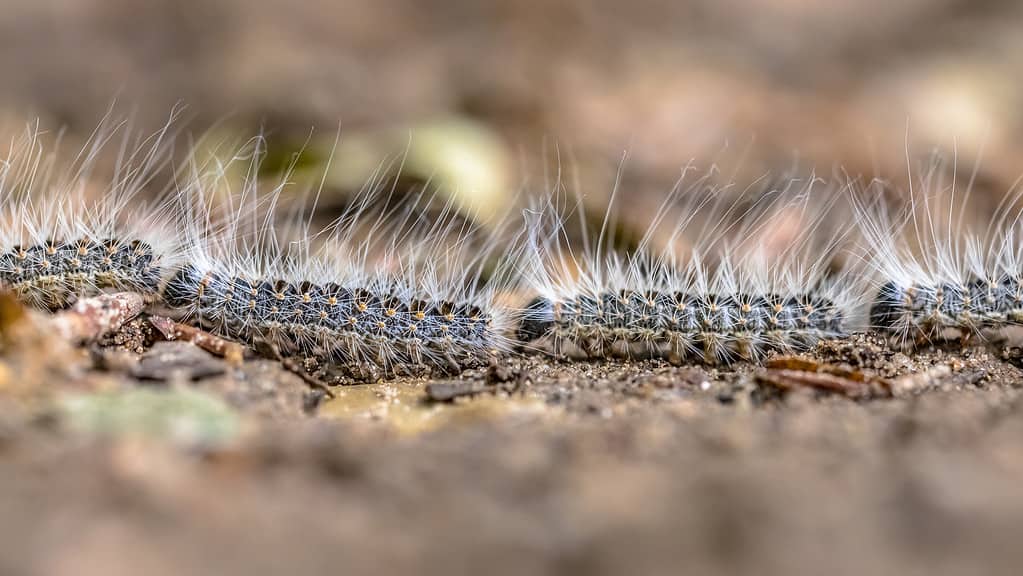
Oak processionary caterpillar’s hairy spikes cause vomiting, rashes, and allergic reactions.
©iStock.com/CreativeNature_nl
Most caterpillars in England pose no danger to humans, but there are a few exceptions, such as the oak processionary moth (OPM) caterpillar.
During the warmer months, this caterpillar is spotted in London, climbing oak trees en-masse like a rippling ocean wave. When touched, this caterpillar’s toxic hairs cause allergic reactions, eye irritation, throat swelling, vomiting, and rashes.
OPM is a non-native oak tree pest from southern Europe, accidentally introduced in 2005. The UK government motors its location and impact to minimize population spread.
The photo featured at the top of this post is © Foto 4440/Shutterstock.com
Thank you for reading! Have some feedback for us? Contact the AZ Animals editorial team.






